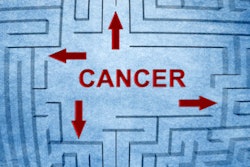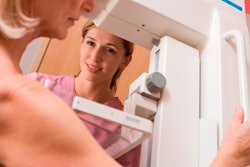The COVID-19 pandemic prompted an increase in the rates of negative mammograms in both screening and diagnostic settings, a study published November 14 in the Journal of Radiology Nursing found.
Compared to prepandemic numbers, researchers led by Lucie Agosta, PhD, from Southeastern Louisiana University in Baton Rouge found significant increases in the proportion of negative mammogram screening results and benign findings. They also found a decrease in the proportion of negative diagnostic mammograms.
"Disruptions in routine screenings and required follow-up diagnostic exams have created many opportunities and challenges," Agosta and colleagues wrote. “Those associated with the resumption of prepandemic era mammography levels and assuring prompt cancer diagnoses and management are of paramount significance.”
It is now well known that the COVID-19 pandemic disrupted mammography services due to facilities temporarily shutting down. Since then, research has quantified the impact of these disruptions, noting that screening mammography levels have mostly rebounded to prepandemic levels.
However, the researchers noted that even after pandemic guidelines were lifted, some women have still been reluctant to reattend their regular mammogram appointments. Agosta and co-authors wanted to investigate the pandemic’s impact on mammography volumes, breast biopsies, and patient outcomes in a large women's specialty hospital in southern Louisiana. They noted that the hospital has been actively working on outreach efforts such as social media postings, mailed letters, and mobile mammography services.
The team compared data collected for 2019 to 2021, focusing on mammography volumes between March and June for these years since the steepest COVID-related restrictions took place in that period in 2020. The group found that screening and diagnostic mammography volumes experienced a sharp decrease from 2019 to 2020, but mostly rebounded by 2021.
However, the authors also found significant significant decreases in the proportion of negative screening and diagnostic mammograms, as well as significant increases in negative benign findings in both imaging settings.
| Proportion of mammogram results between 2019 and 2021 | |||
|---|---|---|---|
| Mammography result | 2019 | 2020 | 2021 |
| Negative (screening) | 39.05% | 35.55% | 36.39% |
| Benign finding-negative (screening) | 44.96% | 48.11% | 47.53% |
| Negative (diagnostic) | 22.25% | 19.03% | 19.5% |
| Benign finding-negative (diagnostic) | 52.14% | 56.97% | 53.84% |
| *All data achieved statistical significance when compared to 2019 results, with the exception of 2021 benign finding-negative (p = 0.155). | |||
Finally, the researchers reported 448 biopsies performed during the four-month period of pandemic-related restrictions in 2020 compared with 600 in the same months in 2019. However, this increased to 638 in 2021 during the period of post-COVID-19 restrictions.
The study authors suggested that understanding the pandemic’s impact in this area can help healthcare providers and policymakers address the challenges women face in accessing essential healthcare services.
“As we continue to provide routine wellness screenings and to facilitate access to essential healthcare services in a postpandemic environment, efforts remain underway to address the disruptions imposed during the COVID-19 era, to continue to allay fears surrounding exposure to the virus, and to minimize delays in the diagnosis and treatment of breast cancer,” they wrote.
The full study can be found here.



















